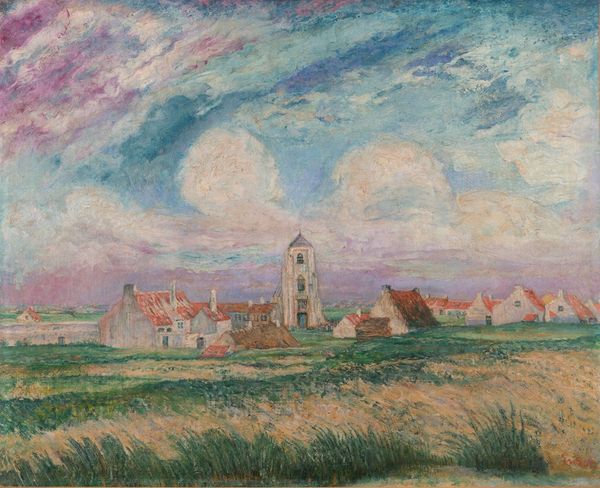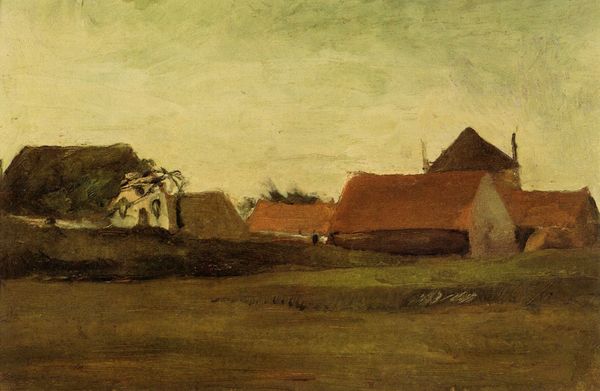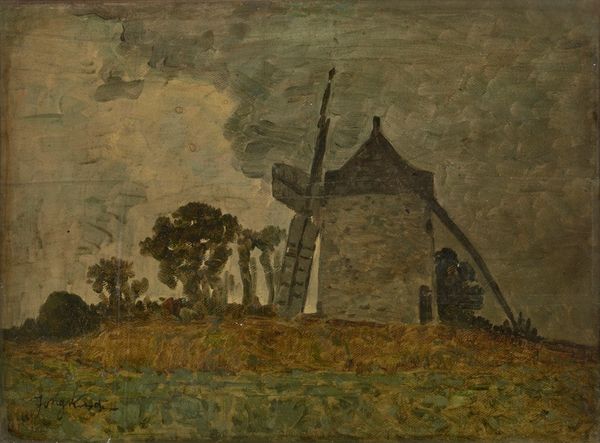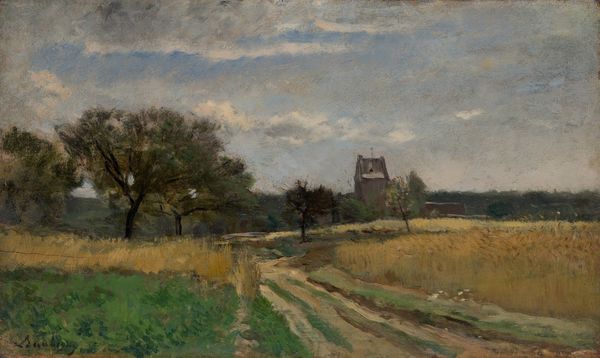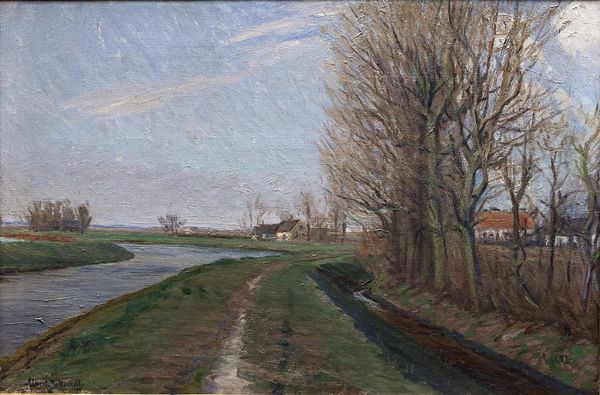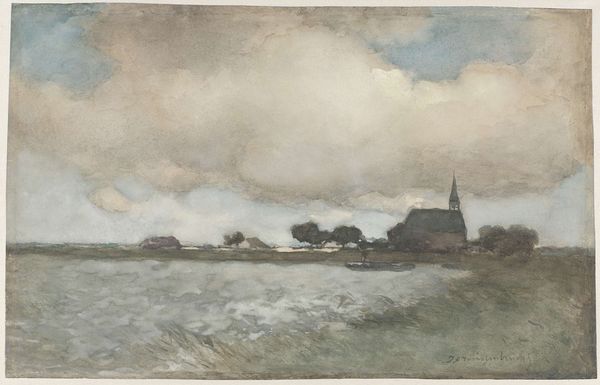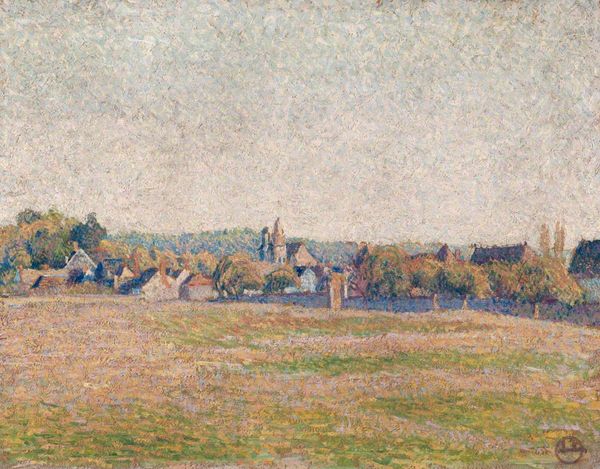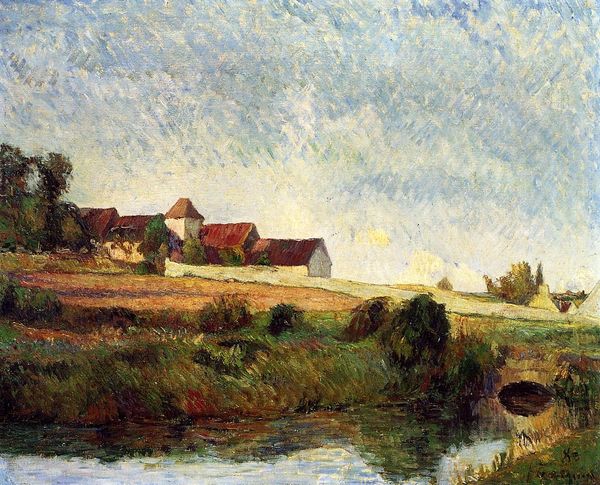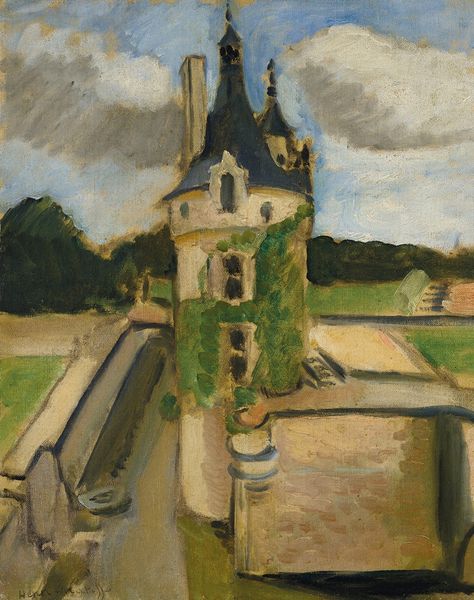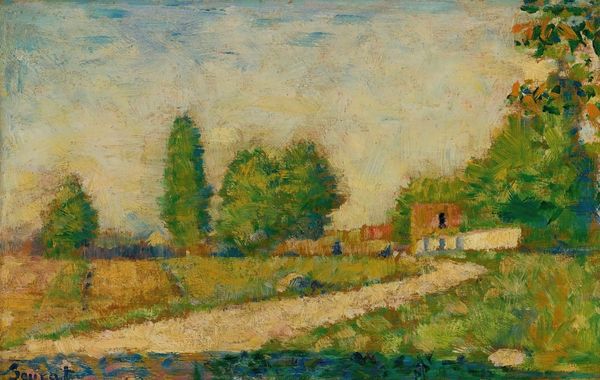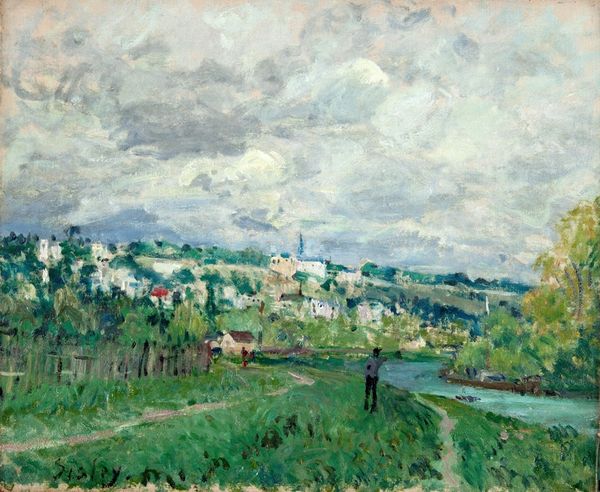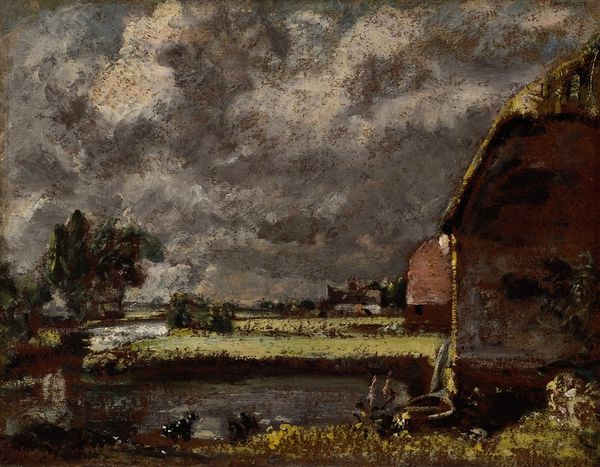
Dimensions: 24 x 33 cm
Copyright: Public domain
Editor: So, this oil painting, "Landscape with hay cart, church towers and windmill" by Theo van Doesburg, dates back to 1901. The green and grey color palette certainly gives it a very serene feeling. How do you interpret the visual symbols in this work? Curator: Notice how the church towers and the windmill punctuate the skyline. They're not just architectural details. In this period, the church would have stood as a symbol of communal life, shared beliefs. And the windmill, a mark of ingenuity, of harnessing nature’s power. Together, what emotional significance might they have carried for viewers at the time? Editor: A feeling of community combined with progress perhaps? Curator: Precisely. Also, note how the hay cart in the foreground is full, implying a good harvest, representing prosperity. Yet, the sky is overcast. What dissonance might that suggest? Editor: Maybe the uncertainty of life even amidst prosperity and the natural order? Or an internal emotional turmoil expressed in nature. Curator: Exactly. Van Doesburg's personal struggles are well-documented. He returned repeatedly to the landscape. How interesting, isn't it, how our emotional landscape often finds its reflection in the outer world. Editor: It's almost as if the painting is inviting us to project our own feelings onto it, which speaks volumes. Curator: Indeed, the power of such works lies not just in the symbols themselves, but in how they continuously resonate through shifting contexts. Editor: I'll definitely view landscapes differently now. Thank you.
Comments
No comments
Be the first to comment and join the conversation on the ultimate creative platform.
